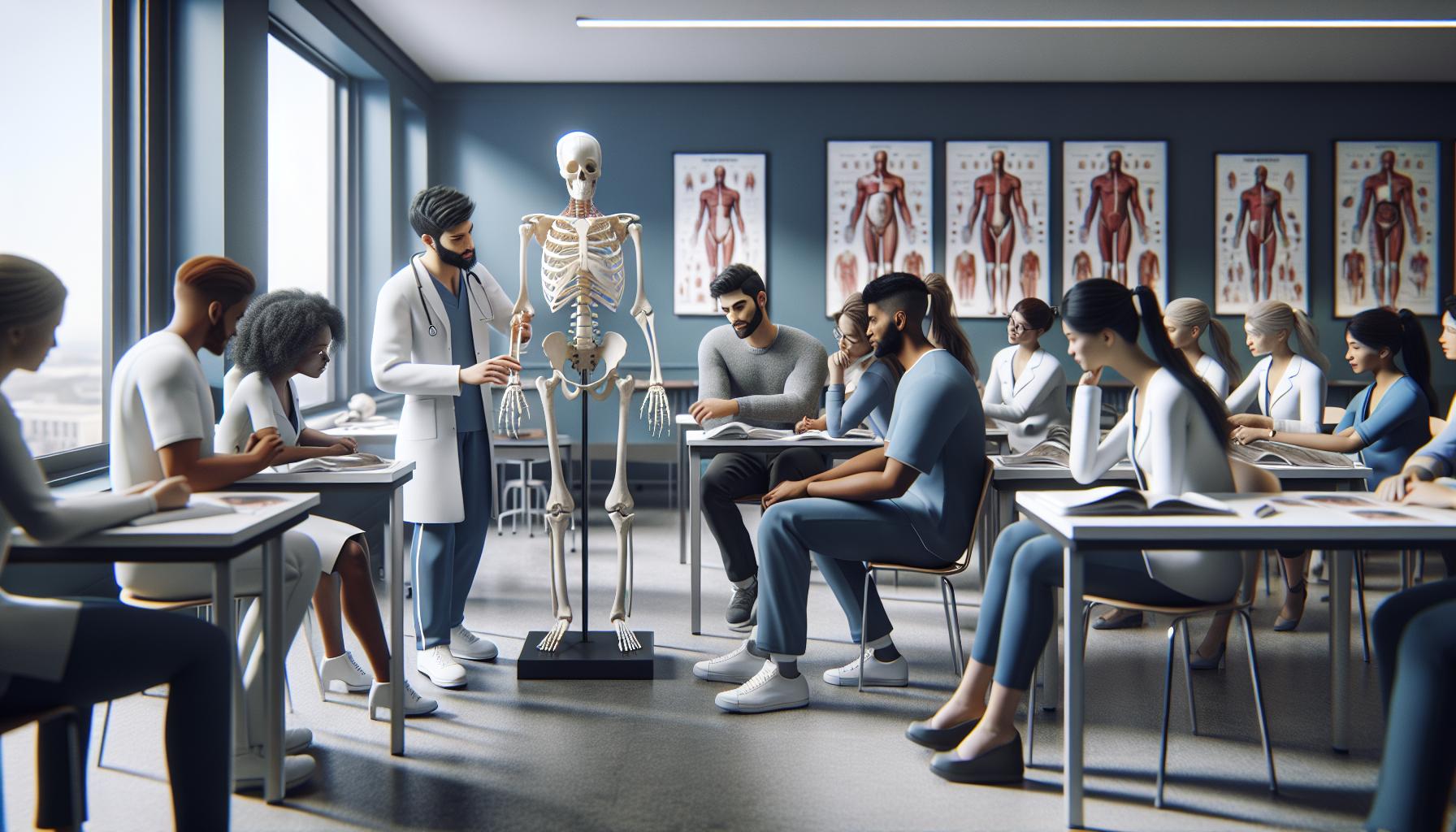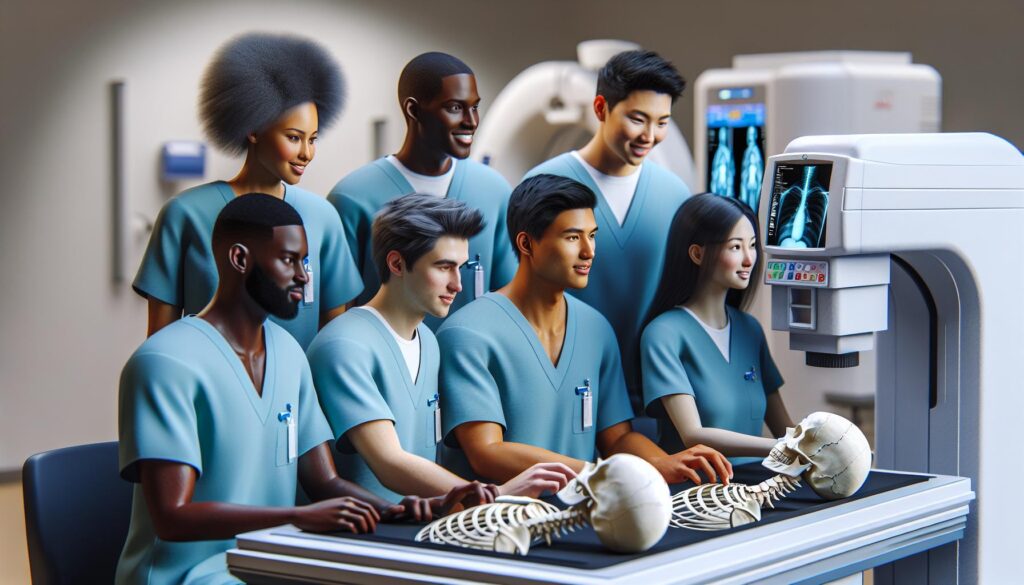Radiology technology stands at the forefront of modern healthcare diagnostics where skilled professionals use advanced imaging equipment to help diagnose and treat patients. For those considering a career in this dynamic field understanding what they’ll learn in radiology tech school is crucial for making an informed decision. Students entering radiology tech programs embark on a comprehensive journey that combines classroom instruction with hands-on clinical experience. The curriculum covers everything from anatomy and medical terminology to radiation physics and equipment operation. This blend of theoretical knowledge and practical skills prepares future radiologic technologists to work effectively in hospitals diagnostic centers and specialty clinics while ensuring patient safety and optimal imaging results.
What Do You Learn in Radiology Tech School
Radiologic technologists operate specialized imaging equipment to create diagnostic images for medical purposes. Their expertise combines technical proficiency with patient care skills to produce high-quality medical images that aid in diagnosis treatment planning.
Core Duties And Responsibilities
A radiologic technologist performs essential imaging procedures across multiple modalities:
- Positions patients correctly for accurate image capture
- Operates X-ray machines CT scanners MRI equipment
- Follows precise protocols for different imaging procedures
- Maintains detailed patient records documentation
- Adjusts equipment settings based on physician orders examination requirements
- Implements radiation safety measures for patients staff members
- Processes develops digital radiographic images
- Collaborates with radiologists other healthcare professionals
- Maintains patient confidentiality following HIPAA regulations
- Communicates clearly with patients about procedures positioning requirements
- Provides emotional support to anxious or uncomfortable patients
- Adapts communication styles for diverse patient populations
- Follows infection control protocols during procedures
- Documents patient histories allergies previous procedures
- Responds professionally to emergency situations
- Adheres to radiation protection standards for patient staff safety
- Practices cultural sensitivity in patient interactions
| Professional Standard | Implementation |
|---|---|
| Patient Privacy | HIPAA Compliance |
| Safety Protocols | ALARA Principles |
| Documentation | Digital Records |
| Communication | Clear Instructions |
| Quality Control | Image Verification |
Essential Medical Knowledge

Radiology tech programs provide comprehensive medical education focusing on human body systems imaging diagnostics. Students gain expertise in three fundamental areas essential for accurate medical imaging interpretation.
Human Anatomy And Physiology
Students master detailed knowledge of body structures including organs skeletal systems blood vessels muscles. The curriculum covers:
- Musculoskeletal system relationships between bones joints ligaments
- Cardiovascular components including heart chambers major vessels circulation
- Respiratory system anatomy from upper airways to lung tissue
- Neurological structures brain spinal cord peripheral nerves
- Digestive system organization from esophagus to intestines
Medical Terminology
Students learn standardized medical vocabulary used in healthcare settings:
- Anatomical directional terms: anterior posterior medial lateral
- Positioning terminology: supine prone oblique
- Common medical abbreviations: AP PA LAT RAD
- Diagnostic procedure names: arthrography myelography fluoroscopy
- Pathological condition descriptions: fractures neoplasms inflammation
- Bone conditions: osteoporosis fractures bone tumors
- Respiratory diseases: pneumonia tuberculosis lung cancer
- Cardiovascular disorders: atherosclerosis aneurysms stenosis
- Neurological conditions: hemorrhage tumors degenerative diseases
- Gastrointestinal abnormalities: ulcers obstructions masses
| Body System | Key Anatomical Structures | Common Pathologies |
|---|---|---|
| Skeletal | 206 bones joints | Fractures arthritis |
| Cardiovascular | Heart 78 vessels | Stenosis thrombosis |
| Respiratory | 2 lungs bronchi | Pneumonia emphysema |
| Nervous | Brain 31 nerves | Stroke tumors |
| Digestive | 9 organs | Ulcers obstruction |
Mastering Imaging Equipment
Radiologic technology students receive comprehensive training in operating specialized medical imaging equipment. The curriculum emphasizes technical proficiency with various imaging systems used in modern healthcare facilities.
X-ray Technology And Equipment Operation
Students learn to operate X-ray machines through hands-on training with components like X-ray tubes, collimators, image receptors. The coursework covers:
- Exposure factors (kVp, mA, time) adjustment for optimal image quality
- Tube positioning techniques for different anatomical projections
- Equipment calibration procedures for consistent imaging results
- Quality control testing methods for maintaining equipment accuracy
- Mobile X-ray unit operation for bedside imaging procedures
Digital Imaging Systems
Digital imaging instruction focuses on modern PACS (Picture Archiving Communication Systems) integration with imaging equipment. Key areas include:
- CR (Computed Radiography) plate processing techniques
- DR (Digital Radiography) detector operation protocols
- Image acquisition software navigation
- Digital image enhancement tools usage
- DICOM standards implementation
- Electronic image storage management
- Digital workflow optimization methods
Radiation Safety Protocols
Safety training emphasizes radiation protection standards for patients, staff, and the public. Essential components cover:
- ALARA (As Low As Reasonably Achievable) principle application
- Personal protective equipment selection and usage
- Radiation monitoring device operation
- Exposure limitation techniques
- Shielding material placement strategies
- Radiation area signage requirements
- Emergency response procedures for equipment malfunctions
| Equipment Type | Training Hours | Skills Focus |
|---|---|---|
| X-ray Systems | 200+ hours | Positioning, Exposure |
| Digital Systems | 150+ hours | Image Processing |
| Safety Devices | 100+ hours | Protection Measures |
Clinical Skills Development
Clinical skills development in radiology tech school combines hands-on practice with supervised patient interactions to build essential competencies. Students learn to perform diagnostic imaging procedures while maintaining high standards of patient care and safety.
Positioning Techniques
Radiology students master patient positioning techniques through practical training sessions in simulated healthcare environments. The curriculum covers:
- Implementing proper body mechanics for patient transfers between wheelchairs beds stretchers
- Executing standard radiographic positions for chest abdomen extremities spine skull
- Modifying positioning for trauma patients pediatric cases geriatric patients
- Applying anatomical markers compression devices immobilization tools
- Practicing verbal commands nonverbal communication for clear patient instruction
Image Quality Assessment
Students develop critical evaluation skills to analyze diagnostic image quality and make necessary adjustments. Key assessment areas include:
- Evaluating density contrast resolution spatial relationships
- Identifying positioning errors artifacts technical deficiencies
- Measuring exposure indicators radiation dose levels
- Performing quality control tests on imaging equipment
- Analyzing image characteristics for different anatomical structures pathologies
- Recognizing signs symptoms of medical emergencies allergic reactions
- Implementing basic life support CPR procedures
- Operating emergency response equipment crash carts oxygen delivery systems
- Executing rapid imaging protocols for trauma cases
- Coordinating with emergency response teams healthcare providers
- Documenting emergency situations according to facility protocols
Professional Development
Professional development in radiologic technology encompasses ongoing education certifications and career advancement opportunities that enhance expertise and marketability in the healthcare field.
Certification Requirements
The American Registry of Radiologic Technologists (ARRT) certification serves as the primary credential for radiologic technologists in the United States. Here are the key certification requirements:
- Complete an ARRT-approved educational program
- Pass the certification exam with a score of 75% or higher
- Maintain ethical standards through adherence to the ARRT Rules of Ethics
- Complete 24 continuing education credits every 2 years
- Document all continuing education activities in the ARRT online system
- Renew certification annually by paying required fees
Career Advancement Opportunities
Radiologic technologists can pursue various specialization paths to advance their careers:
Advanced Modalities:
- Computed Tomography (CT)
- Magnetic Resonance Imaging (MRI)
- Mammography
- Nuclear Medicine
- Interventional Radiology
- Department Supervisor
- Chief Technologist
- Clinical Instructor
- PACS Administrator
- Imaging Director
| Career Path | Additional Certification | Average Salary Increase |
|---|---|---|
| CT Specialist | ARRT (CT) | 15-20% |
| MRI Technologist | ARRT (MR) | 20-25% |
| Mammographer | ARRT (M) | 10-15% |
| Department Supervisor | Management Experience | 30-40% |
| PACS Administrator | IT Certification | 25-35% |
- Additional certification examinations
- Specialized clinical experience
- Advanced technical training
- Leadership skill development
- Cross-functional expertise
A career in radiology technology offers a dynamic blend of medical knowledge technical expertise and patient care skills. Students graduating from radiology tech programs emerge well-equipped to handle advanced imaging equipment while providing compassionate healthcare services. The comprehensive education combining theoretical knowledge practical training and clinical experience creates competent professionals ready to make meaningful contributions to modern healthcare. The field continues to evolve with technological advancements offering numerous opportunities for specialization and career growth. Through dedication to ongoing education and professional development radiologic technologists can build rewarding careers while playing a vital role in patient diagnosis and treatment.



